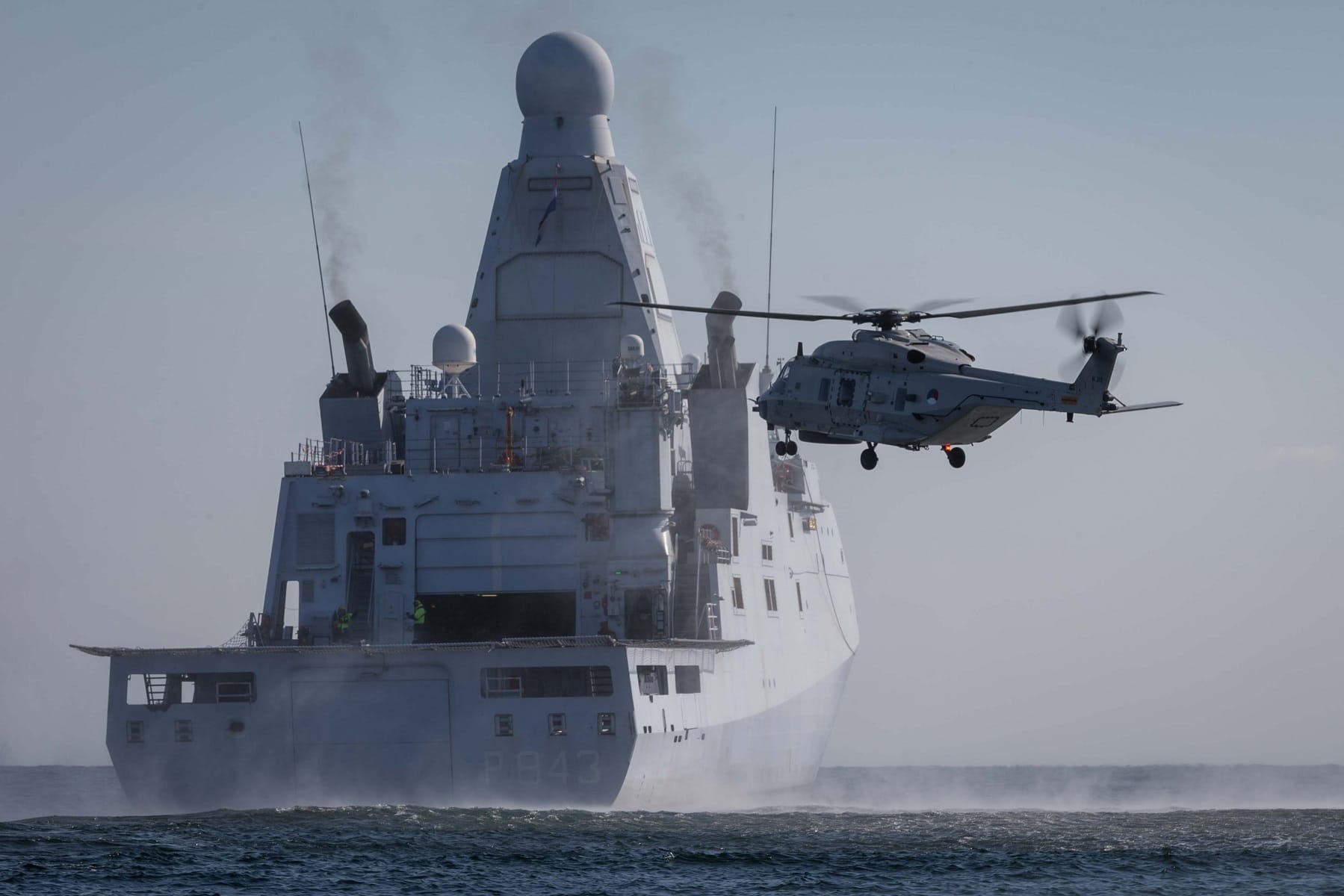- Reaction score
- 8,002
- Points
- 1,160

Dutch Navy to replace OPV and LPD with a Single Class of Ships - Naval News
The Royal Netherlands Navy will procure a single class of ship to replace its existing fleet of LPDs and OPVs in the 2030s
In 2012 the Dutch commissioned 4 Holland class OPVs for service in the North Sea, the Caribbean and the South China Seas. The contract was let with Damen in 2007 - the same year Harper started investigating the Svalbard (laid down in 2000 and commissioned in 2001).
The Hollands are 108 m ships that displace 3750 tonnes, carry an NFH 90 on board and are armed with :
- 1 × 76 mm Oto Melara Super Rapid
- 1 × 30 mm Oto Melara Marlin WS
- 2 × 12.7 mm Oto Melara Hitrole NT
- 6 × 7.62 mm FN MAG machine guns
(The 6375 tonne Svalbard with a crew of 40 was built at a cost of 67 MUSD ( 91 MCAD at current exchange rates))
The vessels resulted from the Dutch Ministry of Defence's Marinestudie. The study proposes the sale of four existing Karel Doorman-class frigates, and using the proceeds and savings of the sale to commission four dedicated patrol vessels, allow the building of a more capable joint support ship to replace the auxiliary replenishment ship HNLMS Zuiderkruis, and reintroducing a mine-sweeping capability to the Dutch Navy.
....
Previously the Dutch built 2x LPDs:
The 14,000 tonne Rotterdam (laid down in 1996 and commissioned in 1998 for 140 MUSD (190 MCAD))
The 16,800 tonne Johan de Witt (laid down in 2003 and commissioned in 2007 for 260 Dutch Guilders (~180 MCAD)
Johan de Witt has a complement of 145 and can lift a Light Battle Group of Dutch Marines.
Rotterdam has a complement of 128 and can also lift a Light Battle Group of Dutch Marines.
...
The Dutch Navy now intends to decommission these 6 vessels and replace them with 6 new vessels, Amphibious Transport Ships.
Dutch Ministry of Defence Press Release translated by Naval News
These Amphibious Transport Ships are suitable for deployment in war conditions as well as for modern amphibious operations. The vessels can also function as station ships, for example. The first new Amphibious Transport Ship is due to enter service in 2032 and will replace two classes of ships with a single class, State Secretary Christophe van der Maat said to the House of Representatives today.
The navy uses the LPDs (Zr.Ms. Rotterdam and Zr.Ms. Johan de Witt) for amphibious operations: bringing Marine Corps units ashore. The OPVs (Holland-class ships) are mainly designed for tasks low in the violence spectrum.
For instance, they are used to intercept drug shipments in the Caribbean. Although these tasks are quite different, this project combines both classes. In fact, they are converging in terms of needs.
For instance, modern amphibious doctrine calls for light, fast and dispersed operations, with light logistical support. The new generation of ships is therefore smaller in size than the current LPDs. This may result, for example, in multiple Amphibious Transport Ships being deployed simultaneously. OPVs, on the other hand, are not currently designed for tasks high on the violence spectrum. Because of the deteriorating international security situation, the navy needs ships that are suitable for war conditions.
In addition, both classes of ships reach the end of their service life at about the same time. Combining the classes will give the Royal Netherlands Navy more flexibility in designating one or more ships for a given mission. Choosing 1 ship class instead of 2 increases efficiency. It also ensures economies of scale in procurement, training and maintenance, among other things.
Ships to enter service annually from 2032
The inflow of the new Amphibious Transport ships and the outflow of the current 2 LPDs and 4 OPVs will be aligned. A vessel will only be withdrawn from service once a new vessel enters service. From 2032 onwards, a new vessel should be operationally deployable every year.
According to the current schedule, that applies to the last acquisition in 2038. For the Rotterdam, that is actually just too late. The ship reaches the end of its service life as early as 2028. Defence is therefore looking at what measures are needed to keep the ship in service until at least 2032. The outflow of the other ships roughly corresponds to the end of their service life.
The project is estimated to cost between €1 billion and €2.5 billion.
The ship is going to be a smaller version of the Rotterdam/Johan de Witt. They are essentially Damen Enforcers and are related to the British Bay Class Transports.


Damen pitches Enforcer for potential UK/NL amphibious requirement - Naval News
Dutch shipbuilder Damen Naval is promoting the latest evolution of its Enforcer amphibious ship family to the UK and Netherlands...
The RN and Royal Marines have been using one of the Bays as an interim Multi Role Support Ship as a launch platform for the Littoral Response Group (North)
Royal Marines at the tip of the NATO spear on major Arctic exercise
The Royal Marines are one of the world’s most respected – and feared – commando forces. Find out what’s behind the iconic Green Beret.
....
Half a dozen General Purpose Motherships for 2.5 BEURO ( ~4 BCAD) capable of operating in Arctic and Tropical waters.


